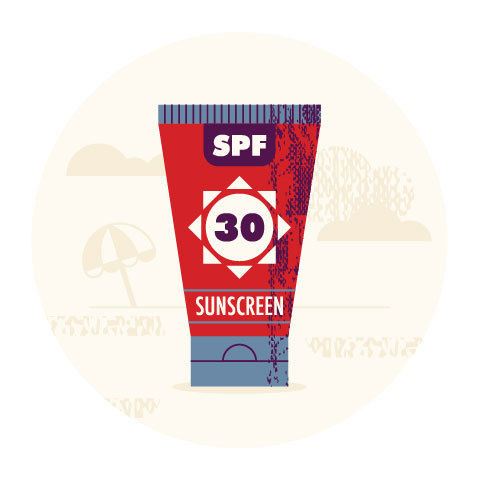A Revolutionary Procedure For a Healthy Heart

The Hofstetter Family
Image: Charles Ford
Chances are, if both of your parents are surgeons and you’re in need of medical attention, you’re going to get the very best care available. When Avery Hofstetter was six or eight months old, her parents, surgeons both, observed that she wasn’t eating as much as her twin sibling and appeared fatigued. Recognizing the signs for patent ductus arteriosus (PDA)—a condition that can lead to lung infections or even heart failure—they took her straight to see Dr. Michael Hines, a pediatric cardiothoracic surgeon affiliated with Children’s Memorial Hermann Hospital and Professor of Pediatric Surgery and Cardiothoracic and Vascular Surgery at UTHealth Medical School.
Did you know?
The embryonic heart starts developing just three weeks after conception.
“They came to me probably because they were surgeons,” Dr. Hines says. The couple knew that Dr. Hines was the only physician in the Southwest with the skill set to use video-assisted thoracoscopic surgery (VATS) to treat Avery’s condition at the time. “We were so lucky to find him,” says her mother, Dr. Rosa Hwang, a surgical oncologist at MD Anderson Cancer Center. “He has a very unique skill set, and he’s very good at what he does.” The next closest place offering the VATS procedure for PDA cases was Florida.
When a baby is inside the womb, a blood vessel called the ductus arteriosus circulates blood between the aorta and pulmonary arteries. After the child is born, the ductus is supposed to close. But in some children it doesn’t, which can cause oxygen-rich blood to mix with deoxygenated, straining the heart and increasing blood pressure in the lung arteries. Patent ductus arteriosus occurs in 8 out of every 1,000 premature babies, and 2 out of every 1,000 carried to term.

The Hofstetter Family
Image: Charles Ford
Avery, born a preemie twin in April 2011, had actually been diagnosed with PDA after she was born, but because the condition often corrects itself with time, it was felt prudent to wait on surgical intervention. When her parents began seeking options for treatment, “We wanted results that were going to be long-lasting and to minimize the risks, to find somebody who was experienced and capable, and that’s what we found with Dr. Hines and this procedure,” says Dr. Hwang.
Fortunately for the family, Dr. Hines had recently relocated to Houston and Children’s Memorial Hermann Hospital, bringing with him the know-how necessary to perform VATS. Unlike traditional surgical options, VATS is done with diagnostic imaging equipment in a pediatric operating room. After only a few incisions—“it would be like if you had three or four little skin moles removed,” Dr. Hines says—he can see directly into the chest cavity and use a small clip to close the ductus, and with “much less pain, much less scarring. You get to go home, you don’t have to go to the ICU or have narcotics.” All of which makes this an ideal procedure for infants, particularly those born prematurely.
Did you know?
A premature baby is any baby born before 37 weeks of gestation.
Dr. Hines has performed the procedure more than 500 times, and over 50 since coming to Children’s Memorial Hermann. VATS, Dr. Hines explains, is not only less invasive than the typical thoracic surgery required to close off the ductus, but it has a significantly quicker recovery time and is cheaper for insurance companies, hospitals, and patients. “The vast majority of patients go home the same day as surgery,” he says. “It’s nice to be able to do outpatient surgeries that save kids a lot of pain.” Although the procedure is primarily performed on babies, Dr. Hines has also performed it on both children and adults, with a 100 percent success rate.
Beyond PDA, Dr. Hines and his team continue to seek out additional applications for the VATS procedure. “The majority of what we do are ductuses, but there are a variety of other procedures we can do that accomplish the same thing as an open surgery,” he says. He has also used the procedure to treat vascular rings, attach pacemaker leads to the heart, repair diaphragms, ligate vessels, and close fistulas.
For Avery, of course, all that mattered was that VATS was successful at treating PDA and could save her the pain and hospital time, not to mention the usual “big incision for such a small baby,” Dr. Hwang says. Just a couple of years prior, the family would have had no other option.
Avery had her surgery in January 2012. Dr. Hwang says that what she and her husband found in Dr. Hines and the staff of Children’s Memorial Hermann Hospital wasn’t just uniquely skilled practitioners, but people who really cared about Avery and her recovery. “I think it can be even more challenging to deal with parents who are both physicians,” she says. “They were very patient with us and did an amazing job.” Before, during, and after the procedure, the staff at Children’s Memorial Hermann provided the couple with every option, explaining every step. “I can’t say enough about the NICU staff, not just the physicians but the nurses,” she says. “They were awesome.”
Avery’s surgery went well, so well in fact that afterward she only required one dose of her pain medication, which was just ibuprofen. And “she was up playing within hours,” Dr. Hwang says. Back to being a regular old kid.















